Do you want to discover Beijing’s food culture? Whether you are a new or experienced traveler, this blog will help you understand how to immerse yourself in excellent local cuisines with Lost Plate’s food tour in 2025. From mouth-watering meals offered at local corners to food markets on street corners, we will showcase the best meals that epitomize Beijing’s food culture. You will discover the inescapable flavors and magnificent dining experiences crafted by Lost Plate through their marvelously tailored tours, making sure you enjoy every morsel like a local. You will learn about the regional meals and how you can relish the countryside’s culture and traditions. Lost plate food tours are sure to leave you enchanted. This post will highlight the steps needed to enhance your travel experience and create lifetime memories through this incredible food tour.
What Makes a Hutong Food Tour in Beijing Unique?
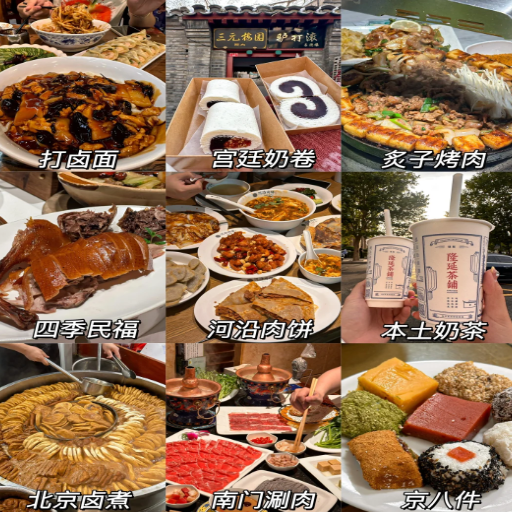
What Makes a Hutong Food Tour in Beijing Unique
Beijing’s Hutong Food Tour combines rich history with culinary immersion by guiding travelers through the city’s ancient alleyways and authentic food. These tours venture further than the commonplace tourist traps to capture the essence of traditional family-owned restaurants and recipes that have existed for years. While tasting them, you will learn about the culture and stories related to various dishes. From classic savory dumplings to the tender Peking duck, there is no shortage of variety. This intimate tour showcases the essence of the city’s heritage and the vibrant atmosphere of the iconic Hutongs.
Exploring Beijing’s Hutong Alleyways
Besides the stunning food, the architectural beauty of the Hutong alleyways is sure to leave you speechless. The signature feature of these narrow lanes is that they connect courtyard homes (siheyuan) from the Yuan, Ming, and Qing dynasties. Even today, these homes preserve traditional and modern lifestyles, observed by their gray brick walls, intricate wooden carvings, and traditional red doors. Historically, these Hutongs have held major significance and have emerged as key city features over the years.
The field of Hutong architectural design follows a north-south layout within the ancient Chinese geomancy (feng shui) context, focusing on the balance between living quarters and the environment. Residential courtyards range from 500 sq. meters for tiny houses to more than 1000 sq. meters for large estates. Although preserving history while developing cities is challenging, restorative projects have shifted to maintaining unique architectural integrity during urban development efforts.
The Role of Local Guides in a Beijing Hutong Experience
Local guides greatly enhance the visitors’ interactions with the hutongs by teaching and providing engaging experiences. The narrow alleys and courtyard homes tell rich cultural, social, and architectural stories and local guides also work as storytellers to captivate visitors. Many guides possess sufficient detail about the hutongs’ history, including their origin and how people function daily. They frequently emphasize the intricacies of the siheyuan (courtyard homes) while explaining their design, meaning, and feng shui traditions.
Besides providing general information, local guides tailor activities to suit each visitor’s specific interests, whether they are visiting the Drum Tower or Nanluoguxiang, trying delicious local dishes, or uncovering off-the-beaten-path treasures. With their local knowledge, they facilitate an effortless journey through the complex network of alleyways that may prove difficult for many newcomers. Many guides are multilingual, which makes traveling easier for non-English speakers.
From a technical perspective, visits usually take 1 to 3 hours, and the distances covered are around 1-3 miles (given the pace of walk and breaks). Group size varies but generally accommodates 10-15 people; private tours are standard. Cultural presentations like paper cutting or tea ceremonies are often part of the package. In the end, well-informed guides will make the experience unforgettable by introducing the visitors to the history of Beijing’s hutongs and helping preserve them with sustainable and educated tourism.
How Lost Plate Enhances Your Food Tour
At Lost Plate, we ensure that your food tour is fun and distinctive by adding immersion to every experience. We emphasize local cuisine and take you to various regions for mouthwatering food. We work with local family-run restaurants and prioritize traditional recipes to conserve local heritage. All our tours include transportation between stops, provided in tuk-tuks and other local, authentic ways. You won’t need to worry about the hassle and can immerse yourself in the tour. Group sizes are small (usually 8-10 people), meaning you get unique attention, and our specialists accompany you on the journey to reveal amazing secrets of local culture and history associated with the food. Each customer’s dietary restrictions are catered for wherever possible, knowing it is an adventure to relish. With Lost Plate, every bite connects you with the people and culture of the region.
How to Experience Beijing Food Like a Local?
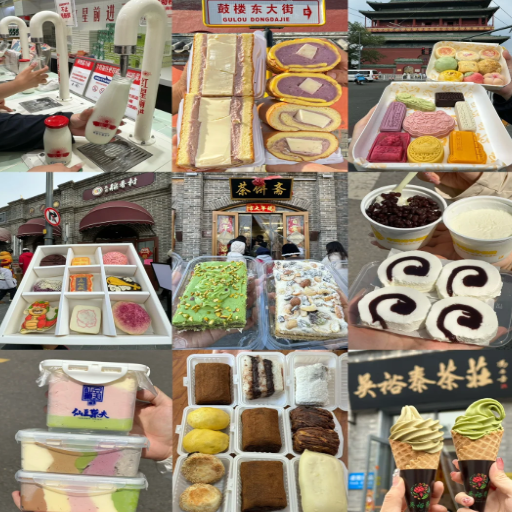
How to Experience Beijing Food Like a Local
To relish the taste of Beijing’s native cuisines, Jiangbing (savory crepes) and Chuan’r (skewered barbecue), get the most out of the local street markets, which are the Wangfujing and the Ghost Street and are highly recommendable. For family-run restaurants serving Peking Duck or Zhajiangmian (Noodles with soybean paste), visit the traditional Hutongs. Completing meals with local beverages such as hot soy milk or Yanjing beer is a must. Speaking to the locals, looking for suggestions, and trying strange-looking dishes will enable you to appreciate Bjeing’s culinary food culture fully.
The Best Hutong Food Stops for Delicious Food
Walk the Hutongs of Beijing and do not miss out on these food stops if you are interested in the authentic local dishes and their unique flavors.
- DaDong Peking Duck Restaurant
Recommended for first-timers, the restaurant serves one of the best roasts of Peking duck fried with highly crispy skin and thin pancakes combined with finely sliced scallions, Hoisin sauce, and other garnishes.
Location: Nanxincang International Plaza, Dongcheng District
- Nuoyan Rice Wine Shop
This rice wine boutique, which specializes in the traditional Chinese form, serves them cold or warm, and they blend nicely with various snacks and even Marinated Tofu.
Location: Wudaoying Hutong, Dongcheng District
- Huang He Shui Baozi
Bite into their steamed buns stocked with juicy pork or savory vegetable fillings, and you’ll savor the taste of Beijing. This family-run shop delivers an authentic bite of Beijing’s street food culture.
Location : Gui Jie (Ghost Street), Dongcheng District
- Huda Restaurant
Known around Ghost Street for its fresh and spicy Sichuan crawfish (mala xiaolongxia), this lively spot caters to locals and adventurous tourists alike.
Location: Dongzhimen Nei Street, Dongcheng District
Along this route stop, a small hutong serves modern and classic versions of traditional dishes. It is one of many hidden gems of Beijing’s hutong food culture. To get the best experience, remember to pre-plan your route and enjoy the vibrant atmosphere as you admire the food.
Local Food Etiquette and Traditions
Whether dining in the Hutongs of Beijing or anywhere else in China, local cuisine tends to be rich. Understanding correct etiquette, however, can enrich the experience even further. Etiquette is essential, and traditions begin with how the table is handled during mealtime. For instance, begin eating only after the host or older person at the table has started eating. Moreover, toasts are a polite gesture when food is served, such as drinks, and remember to keep your glass lower than theirs as a sign of respect.
Another crucial detail is chopstick use. Under no circumstances should chopsticks be inserted upright into a rice bowl, as this is considered disrespectful. Instead, always use the serving spoons or the other side of the cupid chopsticks to avoid spreading germs. Furthermore, relishing your meal is greatly encouraged in China, and slurping soup or noodles is one of the few accepted ways.
The dining style is usually family, where everyone shares several dishes in the middle of the table. Remember that serving small amounts of food at a time is polite to encourage others to have their fill. It is safe to say that staff members at local restaurants do not accept tips, however, this custom is changing in more advance restaurants. Last but not least, if a host is thanked for the meal with a small gesture that is deeply sincere, it’s appreciated.
Must-Try Dishes on a Beijing Food Tour
Regarding food tours in Beijing, some classic dishes surely need to be a part of the experience. At the top of the list is the Peking Duck, which has the duck’s skin cooked until crispy while the meat is tender and juicy, which is made clear by its name. This dish is usually roasted in a brick oven and served with thin pancakes, hoisin sauce, and chopped vegetables such as cucumber and spring onion. Make sure to taste the sweet blend of different flavors and textures.
Next is Zhajiangmian (Fried Sauce Noodles), a comforting and hearty dish of thick wheat noodles topped with a rich soybean paste-based sauce, accompanied by fresh julienned cucumber, radish, and sometimes edamame or green beans. The locals favorite for its distinct and bold umami flavor, food connoisseurs claim that the origin burst in flavors is unlike anything you will ever experience.
Last, I recommend trying street food, such as jianbing, a savory crepe. The batter consists of wheat and mung bean flour, an egg, scallions, and a fried cracker. The crepe is then folded and topped with hoisin and chili sauce. Because it is easy to make and has a satisfying flavor, people turn to this for a quick breakfast option.
These dishes hold a rich history within the city’s cuisine, and although it can be hard to find delicious street food, Beijing surely does not fall short.
Why Choose Lost Plate for Your Hutong Adventure?
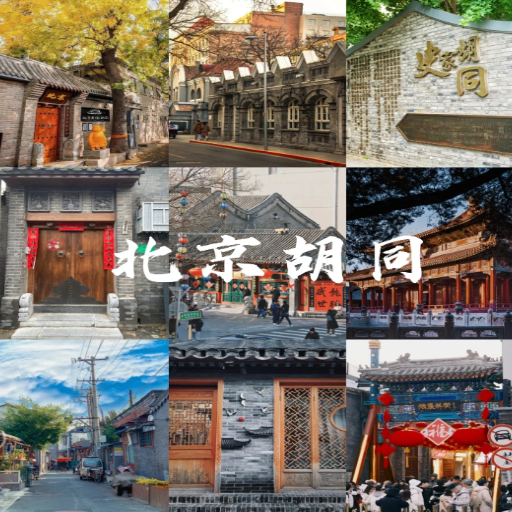
Why Choose Lost Plate for Your Hutong Adventure
Are you tired of the same old travel destinations? How about an authentic experience right in the middle of the historic hutongs of Beijing? Lost Plate offers local food tours unlike any other. If you ever want to explore the culture of Beijing the way the locals do, then you’re in luck because our experienced guides ensure that each tour stop is more than just a place; they’re a story. And with our low group sizes, personalized service is guaranteed!
Customer Reviews and Testimonials
“An Unforgettable Food Adventure!”
“Lost Plate introduced me to dishes I never would have found. The guides were incredible—friendly, knowledgeable, and passionate. Each stop felt special, and the small-group atmosphere made it personal and fun.”
- Rating: ⭐⭐⭐⭐⭐
- Highlight: Authentic local dishes and expert guides.
“Perfect for Food and Culture Lovers”
“I loved how the tour seamlessly combined amazing food with fascinating cultural insights. The guides took care of everything, and I could just enjoy the experience. I highly recommend it to anyone visiting Beijing!”
- Rating: ⭐⭐⭐⭐⭐
- Highlight: Blend of gastronomy and cultural storytelling.
“Exceptional Service and Unique Dining Spots”
“This tour exceeded my expectations! Lost Plate’s small group approach made it feel exclusive, and I was thrilled with the variety of hidden gems we explored. The food was outstanding.”
- Rating: ⭐⭐⭐⭐⭐
- Highlight: Exceptional service and genuine culinary discoveries.
Each testimonial highlights a unique aspect of the Lost Plate experience, showcasing the dedication to quality, cultural immersion, and customer satisfaction.
What Sets Lost Plate Apart from Other Tours in Beijing?
Lost Plate differentiates itself by emphasizing authentic food experiences in a small group setting, making each tour unique and unforgettable. Unlike conventional sightseeing tours, Lost Plate guides travelers to explore Beijing’s hidden food treasures, such as family-owned restaurants, tiny local cafes, and other cultural dining spots. Every tour is hosted by a skilled guide who speaks two languages and understands the cultural context, making the experience better with accompanying narratives.
The tours are engaging and easy. Private tuk-tuk transport allows participants to navigate the busy streets while covering numerous sites in one visit. The tours usually include a carefully chosen set of 4-5 stops to give guests the best sampling experience. Moreover, the tour groups are relatively small (approximately ten people), allowing for a warmer setting and more substantial interactions.
Lost Plate offers more than just great food. They provide true immersion, with participants getting firsthand experiences of Beijing’s famous history, active street life, and celebrity cuisine throughout its food. Such commitment to credibility, partnerships with locals, and exquisite service guarantees exceptional and unrivaled experiences from other tour operators in Beijing.
Booking Your Walking Food Tour with Lost Plate
When you’re ready to reserve your Walking Food tour, head to our website to select your preferred date and time. Rest assured that our booking system is simple and makes the process seamless and secure. Immediately after booking, an email will be sent to you containing vital information about your tour, such as meeting instructions and tips. With a maximum of 10 people per group, every participant is guaranteed an unforgettable experience. Booking at least two weeks in advance is recommended to maximize your chances of getting your ideal spot. Payments can be made using Mastercard, Visa, American Express, Diners Club, and other digital platforms. If you have any special requests regarding food, they can be added during the booking process to make your tour even better.
What are the Hidden Gems on a Hutong Food Tour?
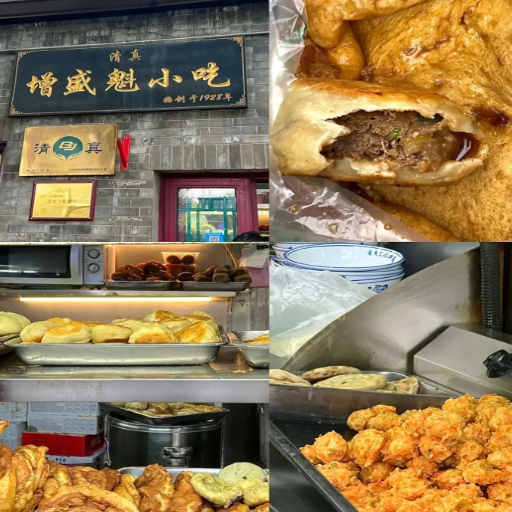
What are the Hidden Gems on a Hutong Food Tour
One of the hidden treasures of a Hutong food tour is discovering family-run restaurants in small alleys that serve authentic and traditional recipes. Visitors love to taste local specialties such as handmade dumplings, delicious lamb skewers, and savory Jianbing (Chinese crepes). Many tours aim to reveal local culture and offer unique snacks and drinks, such as traditional herbal teas and sugar-coated hawthorn skewers.
Off the Beaten Path Eats in Old Beijing
Visiting less popular but equally fascinating parts of Old Beijing will enable you to appreciate the vast culinary possibilities profound in history and culture. Here’s what you can do:
- Family-Run Eateries: Handmade dumplings and Jianbing are served around the corner in quaint little family-run restaurants tucked away in the alleys.
- Tip: Look for a spot with a long line of locals waiting to be served, which guarantees mouthwatering food.
- Street Snacks:
- Sugar-Coated Hawthorn Skewers (Tanghulu): A delicious treat with a sweet and sour flavor that you can eat on the go.
- Lamb Skewers (Yang Rou Chuan): Spiced with cumin and chili for flavor, grilled over an open flame.
- Traditional Beverages:
- Herbal Teas (Liang Cha): These will help cool you down, especially on hot summer days rich in Chinese medicine.
- Soybean Milk (Dou Jiang): A favored hot and cold breakfast item.
To fully appreciate Old Beijing’s rich culinary history, opt for tours that highlight genuine, less commercialized sites and narrate the history of the areas and dishes.
Discovering Craft Beer and Unique Beijing Brews
Beijing has rapidly developed into a craft beer city that combines age-old brewing methods with cutting-edge innovation. In recent years, independent breweries and taprooms have popped up to the delight of beer lovers who have come to enjoy their unique blends. The craft beer market in Beijing continues to grow and showcase a variety of brews that capture different styles, range from experimental to traditional, and offer something unique to local tastes.
Popular Craft Breweries in Beijing
- Great Leap Brewing
As the first craft brewery in Beijing, Great Leap Brewing is known for blending Chinese tea with recipes inspired worldwide. Their “Honey Ma Gold” (4.5% ABV) is incredibly floral and smooth, while the classic “Cinnamon Rock Ale” (6.5% ABV) is spicy and complex. They also offer unique takes on beers, such as their Sichuan peppercorn-infused beers and honey from local farms.
- Jing-A Brewing Co.
Jing-A was created in Beijing to fill the need for a more diverse beer selection. It uses the most creative processes, resulting in exceptional beers, such as “Mandarin Wheat” (4.7% ABV) brewed with hand-peeled mandarins and “Worker’s Pale Ale” (5.5% ABV), which is hop-forward. Its seasonal beers incorporate Chinese red dates, Sichuan chili, and other ingredients.
- Slow Boat Brewery
Slow Boat’s community feel is just as important as its quality, which locals and foreigners adore. The company’s collection is anchored by the outstanding “Monkey’s Fist IPA” (6.2 % ABV), which possesses a loving harmony of bitterness and citrus scents. Seasonal stouts and porters further complement it.
Aspects in Craft Brewing
- Alcohol By Volume (ABV): Beijing craft beers typically have an ABV between 4% and 7.5%, with more potent specialty brews reaching up to 9%.
- International Bitterness Units (IBU): Hoppier beers like IPAs may have an IBU of up to 80, while lighter beers like wheat ales have an IBU of between 15 and 25.
- Ingredients: Unique additions, such as jasmine tea, goji berries, or chili, infuse local flavors into traditional dishes.
Tasting Tips and Cultural Insights
To comprehend the highlights of craft beer in Beijing, visit taprooms with curated flights or brewery tours, where the brewers narrate the tale behind each brew. Each beer pairs well with local snacks such as dumplings or grilled skewers. Beijing’s craft beers highlight various flavors, from the bold porter to the lighthearted wheat ale, mixing modern and traditional beer crafting.
Traditional Beijing Noodles and Dumplings
Regarding Beijing’s noodle and dumpling styles, the notorious zhajiangmian and boiled dumplings (shuijiao) immediately come to mind. I have seen that zhajiangmian consists of thick wheat noodles slathered with an aromatic soybean paste sauce. Sometimes, it is topped with fresh ingredients like cucumber, radish, and scallions for an extra crunch that balances the flavor. At the same time, shui jiao is a small package of tender minced pork dumplings filled with minced pork and vegetables or seafood and tenderly boiled.
Aspects often include precise measurements for the dough and fillings. In the said dumpling dough, it is common to use a ratio of 2 cups of all-purpose flour to about 2/3 cup of water so that the final product remains pliable and soft. While the vegetables differ, the most common is a mix containing 1 pound of ground pork, 1/2 a cup of chopped vegetables, soy sauce, sesame oil, and ginger for seasoning. These two dishes emphasize fresh ingredients cooked using traditional techniques passed down for generations while focusing on Beijing’s rich culinary tradition.
How Does a Hutong Tour Reflect the History of Beijing?
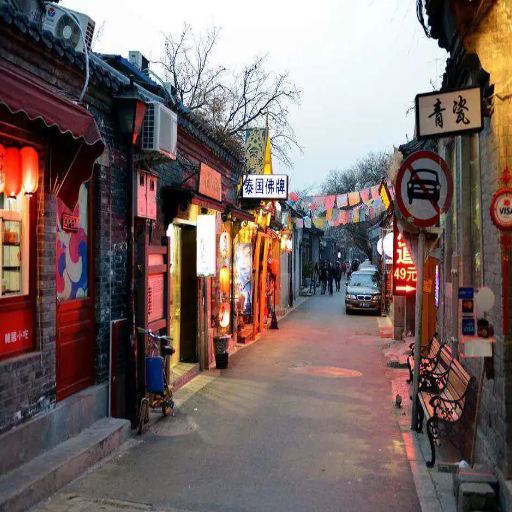
How Does a Hutong Tour Reflect the History of Beijing
A Hutong tour provides a glimpse of life in Beijing by guiding tourists through the historical maze of narrow alleyways. These alleys, which date to the Yuan, Ming, and Qing Dynasties, used to be the heart of Beijing’s neighborhoods, dotted with traditional Siheyuan courtyard houses and active community living. A stroll through the Hutongs gives people a sense of how the city was built, revealing the different styles of architecture, social systems, and customs that contributed to the identity of Beijing over time. These tours beautifully highlight this juxtaposition of history and modernity, showcasing the city’s unique and rich history.
The Cultural Significance of Beijing’s Hutong Alleyways
Hutong alleyways in Beijing are significant because they reflect the city’s rich history and communal culture. Arranged in a grid pattern with traditional Siheyuan courtyard houses, these alleyways showcase families and neighbors living as one community. Their symmetry, privacy, and functional combination of space epitomize ancient Chinese urban planning.
Hutongs possess outstanding architectural features and reflect the living culture of Beijingers, which has been preserved over time. They have witnessed and experienced centuries of historical changes, from solemn rituals during the dynasties to the ordinary life of commoners. In the present day, they represent a balance between modernity and preservation. Many of them are being restored but tweaked to fit the needs of the modern city simultaneously.
Aspects to Consider:
- Width of Alleyways:
- Traditional Hutongs are often 4.5 to 6 meters wide, ensuring access while maintaining a sense of intimacy.
- Siheyuan Dimensions:
- Standard layouts, ranging from 200 to 400 square meters, are designed to accommodate multi-generational families. However, some households prefer a more spacious living arrangement.
- Orientation:
- As a common practice in Chinese feng shui, most Hutongs or Siheyuan are North-South-oriented to maximize the sun and airflow. However, some Hoi Tong are known to have a different orientation.
- Restoration Standards:
- Using modern engineering techniques combined with traditional materials ensures authenticity to the structure while increasing strength and resilience.
Life does not start and end when the physical appearance of Hutongs changes. Preserving them requires a combination of cultural practices, stories, and memories, making Hutongs a symbol of Beijing’s heart and soul.
Understanding Beijing’s Food and Drinks Heritage
For hundreds of years, Beijing developed a distinctive culinary culture that reflects the intricate fusion of the region’s history, culture, and customs. Beijing has always committed to making highly flavored food that reflects a variety of cooking methods with great care put into the balance between taste and texture. This article outlines additional important points of Beijing’s food culture.
Signature Dishes
Peking Duck
Originally served at the Imperial Court, this dish is now popular worldwide and for a reason. It is known for its crispy skin combined with tender meat, and it tastes best when cooked with ducks bred in Beijing that weigh between 2.5 and 3 kg. These ducks are roasted in fruitwood-fired ovens at temperatures around 250 degrees Celsius to ensure even caramelization.
Zhajiangmian (Fried Sauce Noodles)
Zhajiangmian consists of hand-rolled wheat noodles served with fermented soybean paste and garnished with beansprouts and fresh cucumber. The fermented soybean paste’s umami flavor is intensified over time, requiring slow cooking at around 120 degrees Celsius.
Local Snacks
Jianbing (Chinese Crepes)
Besides being a thin batter served on a flat griddle, jianbing is often considered a sweet breakfast. Eggs, scallions, and crunchy outer layers of the wraps are the appealing components of this dish.
Tanghulu (Candied Hawthorn Fruits)
This sweet includes fruit skewers coated in hardened sugar. They boast an enticing middle-ground taste of sweetness and tartness. The temperature of the sugar syrup reaches 150 degrees Celsius to allow proper crystallization.
Beverages
Beijing Yanjing Beer
Like many other locals, people in Beijing enjoy drinking Yanjing beer. This light, refreshing lager with an ABV of around 4% is their favorite.
Jasmine Tea:
Jasmine is steamed over green tea in a process that takes many cycles to reach the desired floral scent.
Cooking Techniques:
Beijing cuisine comprises roasting, braising, steaming, and frying techniques. Stir-frying uses high temperatures of about 200°C that must be applied quickly to capture the flavor, whereas slow braising cooks food over low temperatures to achieve tenderness.
Cultural Significance:
Food in Beijing is instead enjoyed in a social setting that is essential to maintaining social relations. Shared meals are an important aspect of dining and eating out, further serving to practice etiquette that encompasses respect, harmony, and enjoyment.
Beijing’s food and beverages showcase the region’s creativity and love for culinary arts, offering a gastronomical experience that depicts the city’s culture.
Connecting with Local Culture Through Hutong Cuisine
Delving deep into hutong cuisine gives you an engaging way to relive the culture of Beijing. While strolling down these alleyways, you will see breathtaking restorative gems like eateries and food stands serving traditional family recipes. Signature dishes like Jianbing, a wealthy Chinese pancake, and Zhajiangmian, soybean paste noodles, perfectly encapsulate the flavors of the hutong. These experiences encompass more than food; they portray the story of the city’s neighborhoods and customs. Even for passionate cooks, some eateries teach proper hand-pulling noodles or how to make crispy dumplings. Every hutong dish is a masterpiece of simplicity and bold taste, forming the essence of Beijing’s cultural past.
References
Frequently Asked Questions (FAQ)
Q: What are hutongs, and why are they significant for food tours in Beijing?
A: Hutongs are narrow Beijing alleys with significant cultural and historical value. They represent the traditional way of life and are home to some of the best local food experiences. Exploring hutongs allows you to discover authentic flavors and try local dishes often hidden from the typical tourist spots.
Q: How does Lost Plate’s Hutong Food Tour help you eat like a local?
A: Lost Plate’s Hutong Food Tour provides an immersive experience by taking you through hutong alleys, where locals eat. The tour covers hidden gems and offers an authentic taste of Beijing’s culinary scene, allowing you to try local dishes popular among residents.
Q: What types of food can be expected on these tours?
A: The tours include a variety of Beijing’s best food, such as doornail meat, spring pancakes, and roast duck. You’ll also enjoy dishes that showcase the rich and diverse flavors of China’s capital city.
Q: Are there any specific locations that the tour covers?
A: The tour covers various interesting locations within the Hutong neighborhood. You will visit places known for their traditional hutong atmosphere and the best local food offerings.
Q: Is the Great Wall included in the food tour itinerary?
A: While the Great Wall is a must-see attraction in Beijing, it is not part of the hutong food tour itinerary. The tour focuses on exploring the culinary delights within the alleys of Beijing.
Q: Can I experience traditional Beijing breakfast on the tour?
A: Yes, the tour often includes options to try a traditional Beijing breakfast, offering a glimpse into how locals start their day with flavors unique to the capital of China.
Q: What is unique about the evening tour option?
A: The evening tour offers a different perspective of the hutong alleys and is perfect for those interested in exploring Beijing’s vibrant night food scene. You’ll experience the city’s nightlife while enjoying the best food.
Q: How does Lost Plate ensure an authentic taste of Beijing during the tour?
A: Lost Plate collaborates with local vendors and restaurants that have lived in Beijing for generations. This partnership ensures that participants experience the true taste of authentic Beijing dishes that locals love.
Q: Is there any historical significance discussed during the tour?
A: The tour provides interesting facts about the hutongs and the dishes you try. You’ll learn about the cultural and historical context of the food, including stories about the Forbidden City and how certain dishes, like those enjoyed during Chinese New Year, became staples in Beijing.
Q: Does the tour include any experiences related to Shanghai?
A: While focusing on Beijing’s unique culinary scene, some tours may highlight differences and similarities in flavors between Beijing and Shanghai, offering a broader understanding of China’s diverse culinary landscape.